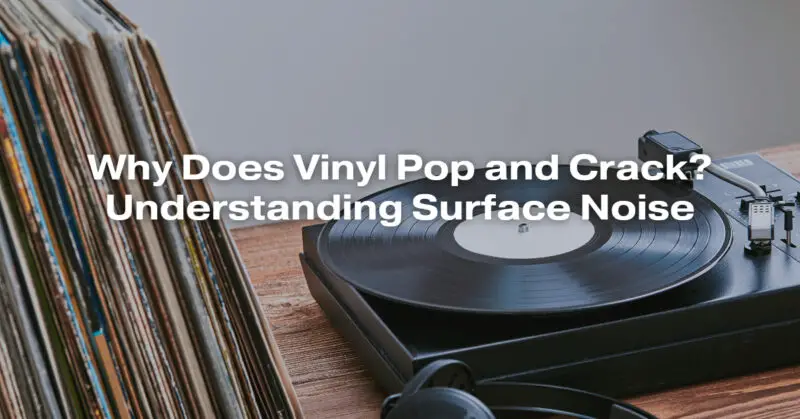Vinyl records are susceptible to pops, crackles, and surface noise due to several factors inherent to the format. Understanding why vinyl produces these noises can help you appreciate the unique characteristics of analog sound and learn how to minimize surface noise for a better listening experience:
1. Dust and Dirt:
- Dust and dirt on the record’s surface are a common source of pops and crackles. When a stylus (needle) encounters a particle of dust or debris, it can create a popping or crackling sound as it navigates the groove.
2. Static Electricity:
- Static electricity can attract dust and debris to the record’s surface. When the stylus encounters static-charged particles, it can produce crackling sounds.
3. Surface Imperfections:
- Vinyl records may have small imperfections, such as tiny pits, scratches, or manufacturing defects. These imperfections can cause noise when the stylus passes over them.
4. Groove Wear:
- Over time, as a vinyl record is played repeatedly, the stylus wears down the groove walls. This wear can create surface noise, particularly in the inner tracks of an album.
5. Stylus Condition:
- The condition of the stylus itself can impact surface noise. A worn or damaged stylus is more likely to produce pops and crackles.
6. Static and Dust in the Environment:
- The environment in which you play vinyl records can contribute to surface noise. Dry, static-prone environments are more likely to attract dust to the record’s surface.
7. Cleaning and Maintenance:
- Regular cleaning and maintenance of both the record and the stylus can help reduce surface noise. Cleaning brushes, anti-static brushes, and record cleaning solutions can be useful tools.
8. Record Quality:
- The quality of the vinyl pressing itself can influence surface noise. High-quality pressings with clean, well-maintained stampers tend to produce fewer pops and crackles.
9. Playback Equipment:
- The quality of your turntable, tonearm, and cartridge can impact the extent of surface noise. Higher-end equipment typically offers superior tracking and reduced noise.
10. Preamplifier and Phono Stage: – The quality of your phono preamplifier and phono stage can influence the amplification and processing of the signal, affecting surface noise.
11. Stylus Tracking Force: – Properly setting the tracking force (the downward pressure applied by the stylus) is crucial. Too much or too little tracking force can lead to surface noise and groove damage.
While surface noise is an inherent part of vinyl playback, many enthusiasts embrace it as part of the analog experience. However, taking care to clean records, stylus, and equipment, and optimizing setup parameters, can help minimize surface noise and preserve the integrity of your vinyl collection. Some audiophiles even find the subtle imperfections of vinyl to add character and charm to the listening experience.

